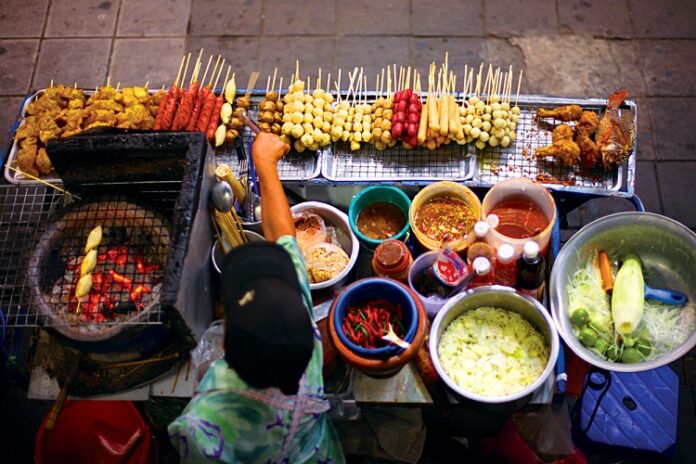Southeast Asian cuisine encompasses the culinary traditions of countries such as Thailand, Indonesia, Vietnam, Malaysia, and the Philippines, among others. The region’s cuisine is renowned for its bold flavors, aromatic herbs, and intricate use of spices.
Each country within Southeast Asia has its distinctive cooking style, yet they all share a common thread of fresh ingredients and a harmonious balance of flavors. Discover the information of vibrant spices, aromatic herbs, and mouthwatering dishes of Southeast Asia with Candidrd.com.
Popular Southeast Asian Ingredients
Chili peppers and spices
Spices play a pivotal role in Southeast Asian cuisine, adding depth, heat, and complexity to dishes. Chili peppers, including bird’s eye and Thai chili, are widely used to add fiery heat. Other common spices include ginger, turmeric, coriander, and cumin, contributing to the distinct flavor profiles of the region’s dishes.
Lemongrass and galangal
Lemongrass and galangal are two essential ingredients in Southeast Asian cooking. Lemongrass lends a citrusy, aromatic note to dishes and is often used in curries, soups, and stir-fries. Galangal, a rhizome similar to ginger, adds a unique, peppery flavor and is frequently used in Thai and Indonesian cuisines.
Coconut milk and palm sugar
Coconut milk is a staple ingredient in many Southeast Asian dishes, providing a rich and creamy base. It is commonly used in curries, desserts, and sauces, imparting a subtle sweetness and depth of flavor.
Palm sugar, derived from the sap of palm trees, is another widely used ingredient, offering a natural sweetness to balance the spiciness of certain dishes. Resepnastar.com offers a vide range of information, gateway to explore the exotic flavors, spices, and authentic recipes of the region.
Signature Dishes from Southeast Asia
Pad Thai: A Thai street food favorite
Without a doubt, one of the most well-known Thai foods is pad Thai. Rice noodles, prawn or chicken, eggs, bean sprouts and tofu are all stir-fried together in a delicious sauce prepared from tamarind paste, fish sauce and palm sugar. Pad Thai perfectly mimics the flavor of Thai street cuisine, garnished with crushed peanuts and a splash of lime. Prepare to be amazed by Southeast Asia’s culinary tapestry! Theleadbelly.com has you covered.
Nasi Goreng: Indonesian fried rice
Nasi Goreng is a beloved Indonesian dish showcasing the archipelago’s diverse flavours. It consists of fried rice cooked with shrimp, chicken, vegetables, and spices.
The rice is typically seasoned with kecap Manis, a sweet soy sauce, and garnished with a fried egg, prawn crackers, and fresh herbs. Nasi Goreng is a satisfying and flavorsome meal that exemplifies Indonesian cuisine.
Pho: Vietnamese noodle soup
Pho is a Vietnamese culinary gem that has gained popularity worldwide. This aromatic noodle soup is made with a fragrant beef or chicken broth infused with spices such as star anise, cinnamon, and cloves. Thin rice noodles are added to the steaming hot broth along with thinly sliced beef or chicken, and it is traditionally served with an array of fresh herbs, bean sprouts, lime, and chili. Pho is a comforting and soul-nourishing dish that reflects the elegance of Vietnamese cuisine.
Regional Variations in Southeast Asian Cuisine
Thai cuisine: Balance of flavors
Thai cuisine is known for its harmonious blend of sweet, sour, salty, and spicy flavors. Tom Yum, a tangy and spicy soup, and Green Curry, a fragrant and spicy coconut-based curry, are just a few examples of the distinctive flavors found in Thai cuisine. Using fresh herbs, such as Thai basil, coriander, and kaffir lime leaves, adds an extra layer of complexity to the dishes.
Indonesian cuisine: Rich and diverse
Indonesian cuisine reflects the country’s diverse cultural heritage and abundant natural resources. From Sumatran rendang, a slow-cooked beef curry, to Balinese sate lilit, minced meat skewers, each region in Indonesia boasts its specialties. The cuisine often incorporates aromatic spices like nutmeg, cloves, and cardamom, creating an explosion of flavors on the palate.
Vietnamese cuisine: Fresh and aromatic
Vietnamese cuisine is characterized by its emphasis on fresh, vibrant ingredients and minimal use of oil. The iconic Vietnamese spring rolls, Goi Cuon, are made with translucent rice paper wrapped around a medley of fresh herbs, vermicelli noodles, and either shrimp or pork. The delicate balance of flavors and textures in Vietnamese cuisine sets it apart.
Conclusion
Embarking on a culinary journey to Southeast Asia is an invitation to explore a world of exotic flavors, vibrant street food, and rich culinary traditions. From the aromatic spices of Thai cuisine to the diverse dishes of Indonesia and the fresh delights of Vietnamese street food, each bite tells a story of the region’s cultural heritage. So, pack your bags, open your taste buds to new experiences, and savor the enchanting flavors of Southeast Asia.









